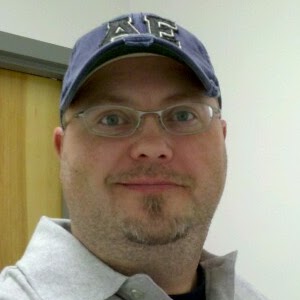Kenneth J Stephenson
age ~33
from Mount Holly, NJ
- Also known as:
-
- Kenneth A Stephenson
- Ken J Stephenson
Kenneth Stephenson Phones & Addresses
- Mount Holly, NJ
- Delanco, NJ
- Cleveland, OH
- Marlton, NJ
Medicine Doctors

Kenneth A. Stephenson
view sourceSpecialties:
Orthopaedic Surgery
Work:
Center For Orthopedic Surgery
4642 N Loop 289 STE 101, Lubbock, TX 79416
8067974985 (phone), 8067928588 (fax)
4642 N Loop 289 STE 101, Lubbock, TX 79416
8067974985 (phone), 8067928588 (fax)
Education:
Medical School
University of Texas Medical School at San Antonio
Graduated: 1990
University of Texas Medical School at San Antonio
Graduated: 1990
Procedures:
Hallux Valgus Repair
Joint Arthroscopy
Lower Leg Amputation
Arthrocentesis
Hip/Femur Fractures and Dislocations
Knee Arthroscopy
Lower Leg/Ankle Fractures and Dislocations
Wound Care
Joint Arthroscopy
Lower Leg Amputation
Arthrocentesis
Hip/Femur Fractures and Dislocations
Knee Arthroscopy
Lower Leg/Ankle Fractures and Dislocations
Wound Care
Conditions:
Plantar Fascitis
Ankylosing Spondylitis (AS)
Fractures, Dislocations, Derangement, and Sprains
Hallux Valgus
Internal Derangement of Knee
Ankylosing Spondylitis (AS)
Fractures, Dislocations, Derangement, and Sprains
Hallux Valgus
Internal Derangement of Knee
Languages:
English
Spanish
Spanish
Description:
Dr. Stephenson graduated from the University of Texas Medical School at San Antonio in 1990. He works in Lubbock, TX and specializes in Orthopaedic Surgery. Dr. Stephenson is affiliated with Covenant Medical Center and Grace Medical Center.
Isbn (Books And Publications)

Geography of the British Isles in Colour:for C.S.E. and G.C.E. O Level Students: For C.S.E. and G.C.E. O Level Students
view sourceAuthor
Kenneth B. Stephenson
ISBN #
0713705647

Introduction To Circle Packing: The Theory of Discrete Analytic Functions
view sourceAuthor
Kenneth Stephenson
ISBN #
0521823560

Uniformizing Dessins and Belyi Maps Via Circle Packing
view sourceAuthor
Kenneth Stephenson
ISBN #
0821835238
Resumes

Kenneth Stephenson
view source
Kenneth Stephenson
view source
Kenneth Stephenson
view sourceName / Title
Company / Classification
Phones & Addresses
STEPHENSON CONTRACTING INC
Us Patents
-
Sourceless Downhole X-Ray Tool
view source -
US Patent:7960687, Jun 14, 2011
-
Filed:Sep 30, 2010
-
Appl. No.:12/895463
-
Inventors:Matthieu Simon - Princeton NJ, US
Kenneth Stephenson - Princeton NJ, US -
Assignee:Schlumberger Technology Corporation - Sugar Land TX
-
International Classification:G01V 5/08
-
US Classification:2502691
-
Abstract:Systems, methods, and devices relating to a sourceless X-ray downhole tool are provided. By way of example, such a downhole tool may include an X-ray generator, an X-ray detector, and data processing circuitry. The X-ray generator may emit some X-rays out of the downhole tool and some X-rays internally through the downhole tool. The X-ray detector may detect some of the X-rays that return to the downhole tool, as well as some of the X-rays that pass internally through the downhole tool. The data processing circuitry may gain-stabilize the X-ray detector based at least in part on the X-rays that passed internally through the downhole tool and were detected by the X-ray detector.
-
Neutron Generator
view source -
US Patent:20110180698, Jul 28, 2011
-
Filed:Feb 26, 2009
-
Appl. No.:12/393462
-
Inventors:Kenneth E. Stephenson - Princeton NJ, US
-
International Classification:G01V 5/10
G21B 1/11 -
US Classification:2502691, 376108, 376119
-
Abstract:A neutron generator includes a sealed envelope providing a low pressure environment for a gas. One end of the envelope defines an ion source chamber. A target electrode is disposed at the other end of the envelope. An extracting electrode is spaced apart from the target electrode by an accelerating gap. The extracting electrode bounds the ion source chamber. A dispenser cathode electrode and grid electrode are disposed in the ion source chamber for inducing ionization in the ion source chamber. The dispenser cathode electrode, the grid electrode and the extracting electrode operate at a positive high voltage potential and the target electrode operates at or near ground potential. This configuration provides an electric field gradient that accelerates ions towards the target electrode to induce collisions of ions with target material, thereby causing fusion reactions that generate neutrons. High voltage power supply circuit means supplies a positive high voltage signal to the electrodes of the ion source. The positive high voltage signal has a low voltage signal component floating on a positive high voltage signal component. For the dispensing cathode electrode, the low voltage signal component can be a DC or AC signal suitable for emitting electrons from the dispensing cathode electrode. For the grid electrode, the low voltage signal component can be a positive pulsed-mode signal (preferably with magnitude in the range between 100 to 300 volts). High voltage insulation surrounds and electrically insulates the high voltage power supply circuit means. Other ion source electrode configurations, such as cold cathode (Penning) ion source and RF-driven ion source, can also be used.
-
Optimization Of Neutron-Gamma Tools For Inelastic-Gamma Ray Logging
view source -
US Patent:20120197529, Aug 2, 2012
-
Filed:May 21, 2010
-
Appl. No.:13/321933
-
Inventors:Kenneth E. Stephenson - Princeton NJ, US
David Rose - Sugar Land TX, US
Christian Stoller - Princeton Junction NJ, US
Donna Simonetti - Hamilton NJ, US -
International Classification:G06F 19/00
G01V 5/10 -
US Classification:702 8, 2502696
-
Abstract:Systems, methods, and devices for inelastic gamma-ray logging are provided. In one embodiment, such a method includes emitting neutrons into a subterranean formation from a downhole tool to produce inelastic gamma-rays, detecting a portion of the inelastic gamma-rays that scatter back to the downhole tool to obtain an inelastic gamma-ray signal, and determining a property of the subterranean formation based at least in part on the inelastic gamma-ray signal. The inelastic gamma-ray signal may be substantially free of epithermal and thermal neutron capture background.
-
Identification Of Neutron Capture From A Pulsed Neutron Logging Tool
view source -
US Patent:20130211724, Aug 15, 2013
-
Filed:Jun 27, 2011
-
Appl. No.:13/807681
-
Inventors:John B. Fitzgerald - Cambridge, GB
Kenneth E. Stephenson - Plainsboro NJ, US -
Assignee:SCHLUMBERGER TECHNOLOGY CORPORATION - Sugar Land TX
-
International Classification:G01V 5/10
-
US Classification:702 8, 2502696, 250254
-
Abstract:The present disclosure is intended to overcome the problem of hydrogen contamination of the density signal. The approach is to compute the neutron capture portion of the total gamma ray counts and subtract it from the total counts resulting in a pure inelastic gamma ray measurement.
-
Photomultipler-Based Neutron Detector
view source -
US Patent:20130256520, Oct 3, 2013
-
Filed:Mar 28, 2012
-
Appl. No.:13/432780
-
Inventors:Roman Korkin - Lawrenceville NJ, US
Wolfgang Ziegler - Hightstown NJ, US
Kenneth Stephenson - Plainsboro NJ, US -
International Classification:G01V 5/04
G01T 3/06 -
US Classification:250256, 250361 R, 250362
-
Abstract:A neutron detector is provided which may include a neutron converting layer, and a scintillator layer adjacent the neutron converting layer. The neutron detector may further include a photomultiplier adjacent the scintillator layer. By way of example, the neutron detector may be used in a well logging apparatus to determine a neutron flux incident upon the neutron converting layer, and thereby determine the neutron porosity of a geological formation around a wellbore.
-
Multiplier Tube Neutron Detector
view source -
US Patent:20130299713, Nov 14, 2013
-
Filed:Nov 11, 2011
-
Appl. No.:13/885667
-
Inventors:Kenneth Stephenson - Plainsboro NJ, US
Christian Stoller - Princeton Junction NJ, US
Olivier G. Philip - Ewing NJ, US -
Assignee:SCHLUMBERGER TECHNOLOGY CORPORATION - Sugar Land TX
-
International Classification:G01T 3/00
-
US Classification:25039001
-
Abstract:A neutron detecting device using a neutron-reactive material as the source of charged particles to feed conventional dynode-based electron multiplier which not gas-filled (i.e., with He). The detector comprises a neutron-reacting material that produces charged particles, coupled with an electron multiplier that is known for use in photomultipliers. The neutron-reacting material is deposited on a substrate at the entrance to the electron multiplier. Charged particles from the neutron-reacting material impinge on the first dynode of the electron multiplier, where, in turn, electrons are generated. The secondary electrons are collected by a second dynode, and the charge so collected is amplified in each succeeding dynode stage in a cascade effect. The charge pulse from the anode is processed by subsequent pulse processing electronics and counting electronics to provide a count rate that is proportional to the neutron flux incident on the neutron-reacting material.
-
Solid Dynode Structure For Photomultiplier
view source -
US Patent:47106751, Dec 1, 1987
-
Filed:Apr 29, 1985
-
Appl. No.:6/728135
-
Inventors:Kenneth E. Stephenson - Pennington NJ
-
Assignee:Sangamo Weston, Inc. - Norcross GA
-
International Classification:H01J 4306
H01J 4322 -
US Classification:313532
-
Abstract:A photomultiplier includes a solid disk dynode and a pair of annular guiding electrodes disposed about the disk dynode transversely along the central axis of the photomultiplier tube on opposite sides of the dynode. The secondary and subsequent dynodes may be of conventional (e. g. venetian blind) construction or of solid disk construction. The solid disk dynode and guiding structure exhibits improved photoelectron pulse-height resolution and a better signal-to-noise ratio than a conventional venetian blind type dynode. In addition, the solid dynode structure is less susceptible to physical shock than conventional photomultiplier dynode designs.
-
Scintillation Detector Package Having Radioactive Support Apparatus
view source -
US Patent:20140339408, Nov 20, 2014
-
Filed:May 15, 2013
-
Appl. No.:13/895130
-
Inventors:- Sugar Land TX, US
Christian Stoller - Princeton Junction NJ, US
Kenneth E. Stephenson - Plainsboro NJ, US -
Assignee:Schlumberger Technology Corporation - Sugar Land TX
-
International Classification:G01V 5/12
G01T 1/20 -
US Classification:250256, 2504831, 250361 R
-
Abstract:A radiation detector package includes a support apparatus at least part of which is constructed from a naturally occurring radioactive material. A scintillator is associated with the support apparatus. The support may include a detector housing carrying a photodetector and the scintillator, and the detector housing may be constructed from the naturally occurring radioactive material.
License Records
Kenneth Stephenson
License #:
RS128903A - Expired
Category:
Real Estate Commission
Type:
Real Estate Salesperson-Standard

Kenneth James Stephenson
view source
Kenneth D. Stephenson
view source
Kenneth G. Stephenson
view sourceGoogleplus

Kenneth Stephenson

Kenneth Stephenson

Kenneth Stephenson

Kenneth Stephenson

Kenneth Stephenson

Kenneth Stephenson
Flickr
Youtube
Classmates

Kenneth J Stephenson
view sourceSchools:
Burlington City High School Burlington NJ 1975-1979
Community:
Thomas Lee, Shirley Odums

Kenneth Stephenson
view sourceSchools:
Baskin High School Baskin LA 1975-1979
Community:
Emily Wilson, Marvin Smith, Anthony Fava, Lewis Britt

Kenneth Stephenson
view sourceSchools:
Whiting High School Whiting IN 1950-1954
Community:
Sylvia Planer, Terry Callahan

Kenneth Stephenson
view sourceSchools:
Needham B Broughton High School Raleigh NC 1956-1960
Community:
Marie Vereen, Judith Bishop, Deborah White, Jean Lefort, Jo Crowder, Colon Gaskill, Jim Dowdee, Loretta Lloyd, Thomas Futrell, Margie Brooks

Kenneth Stephenson
view sourceSchools:
Fuquay-Varina High School Fuquay Varina NC 1967-1971
Community:
Evelyn Holland, Melvis Ray, Robbie Price, Bonnie Mclean, Meigs Lassiter, Pat Adams, Faye Cress, Gloria Johnson, Diane Raines, Phyllis Plummer, Kathy Beasley

Kenneth Stephenson
view sourceSchools:
Northampton County East High School Conway NC 1981-1985
Community:
Paulette Long, Denise Lane, Cathy Grant, Keith Johnson, Eddie Hoggard, E Britt, Lori Pearce, Cassandra Ward, Dawn Thompson, Felicia Vaughan, Jay Gatling

Kenneth Stephenson II | F...
view source
Kenneth Stephenson | Lans...
view sourceGet Report for Kenneth J Stephenson from Mount Holly, NJ, age ~33













